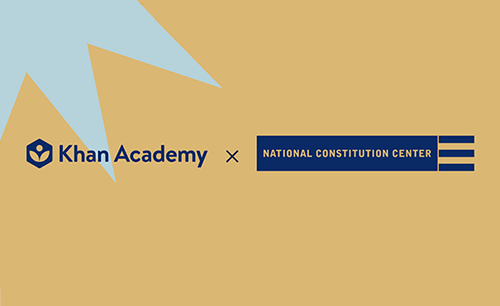At the National Constitution Center, we value civil dialogue, which empowers students to speak about constitutional and historical topics in ways that remain civil, respectful, and reflective. As you prepare to discuss these topics in your classroom, we encourage you to establish norms such as:
- Stay calm
- Listen patiently
- Listen actively
- Don’t speak twice until everybody has spoken once
You can find more support for establishing norms and civil dialogue practices in our Civil Dialogue Toolkit.
Recently, a member of the House of Representatives proposed changing the Constitution to allow current President Donald Trump the option of running for a third term as president. Constitutional amendment proposals are common during congressional terms, but few ever make it to the states as proposed amendments.
Media Asset
In this Constitution Daily blog post, we explore a recently proposed amendment addressing presidential term limits, how Congress handles proposed amendments, and the framework for amending the Constitution as outlined in Article V.
Discussion Questions for Students
- What does the 22nd Amendment say about presidential term limits, and why was it added to the Constitution?
- What would the proposed amendment change about current presidential term limits?
- What are the steps a proposed amendment must go through before it becomes part of the Constitution?
- Why did the founders include a formal amendment process to change the Constitution?
Select an Optional Student Activity for Deeper Exploration
- Create a visual representation (diagram, infographic, etc.) of the steps involved in the amendment process, with a focus on how a proposed change to presidential term limits would become a constitutional amendment. What does this process reveal about the balance of power between the branches of government?
- Choose one of the four amendments outlined in the Constitution Daily post that are technically still pending and track its progress through the amendment process outlined in Article V. What was happening in the country at the time it was proposed? How far along in the amendment process is it? Setting aside the question of ratification deadlines, what else would have to happen for it to become an amendment? What does this process reveal about the balance of power between the branches of government?
- George Washington set the precedent of serving only two terms as president, a tradition that remained until Franklin D. Roosevelt ran for—and won—a third term in the election of 1940. Read the blog post and create a pros and cons chart outlining the benefits and drawbacks of presidential term limits.
- Create a visual timeline showing the key moments leading to the passage of the 22nd Amendment.
Dig Deeper on this Content with Additional Resources
Historical Foundations through Primary Sources
- Article V: The Amendment Process
- 22nd Amendment to the Constitution
- “FDR’s third term election and the 22nd Amendment,” Constitution Daily (Nov. 5, 2020)
Develop Constitutional Thinking Skills with Current Events
- New Amendments and the Future of Constitutional Reform (We the People podcast)
- Common Interpretation and Matters of Debate over the 22nd Amendment (Interactive Constitution essays)
- The Constitution Drafting Project: A Discussion of Five New Amendments (America's Town Hall video)






